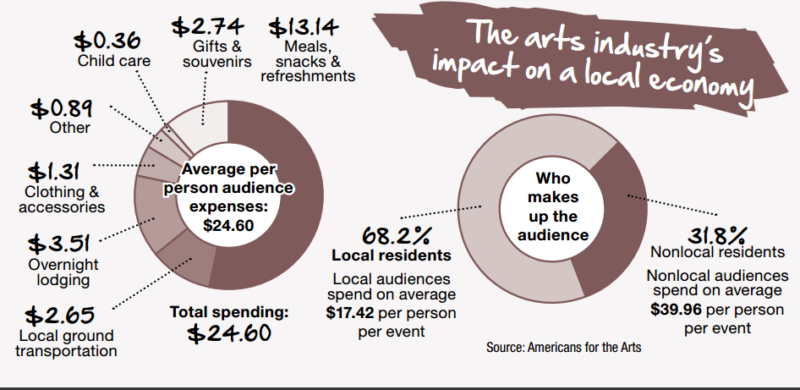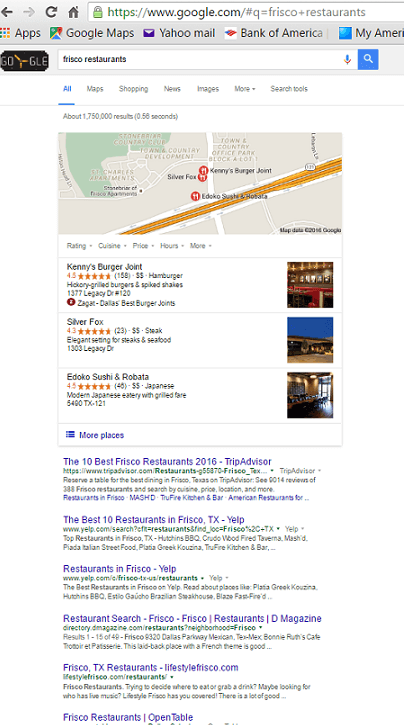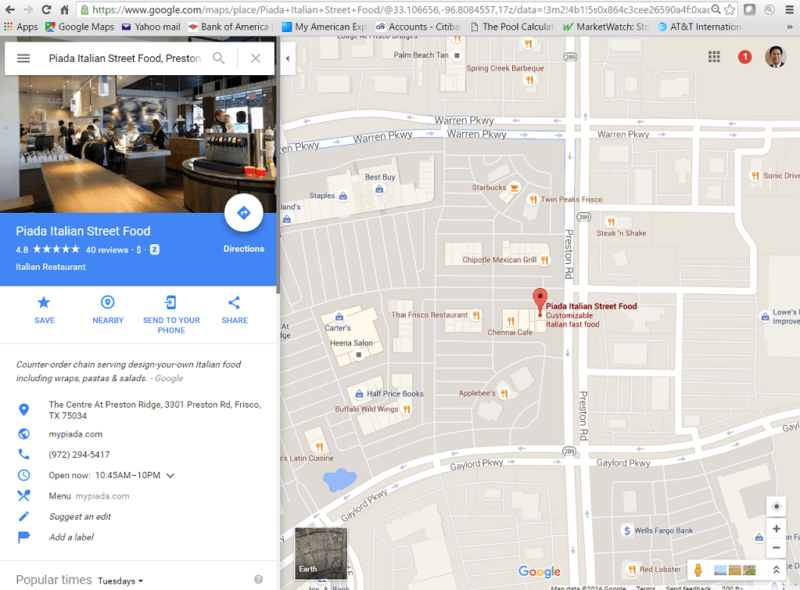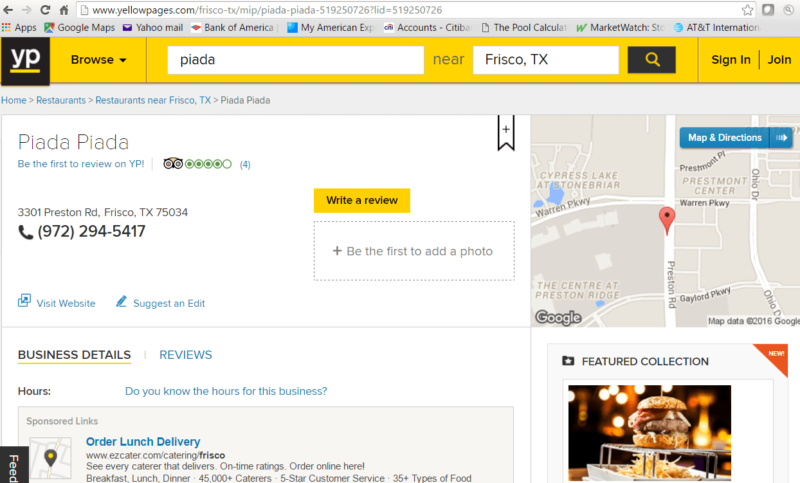Case study: 33% of local search business is from non-locals (and 7 tips for capturing that traffic)
Non-locals make up a significant percentage of local search business. Columnist Wesley Young looks at the importance of this audience and provides seven marketing tips to help you maximize its potential.
As summer travel rolls into full swing, I’m reminded that much of local search is performed by non-locals. Depending on vertical, a significant amount of business may be from visitors outside the local area, either long-distance travelers or those visiting from nearby towns for the day.
I’ll use my town, Frisco, Texas, which is a far northern suburb of Dallas, as an example for some perspective. Frisco is not like San Francisco, Washington, DC, or other destinations that have much stronger reputations for tourism and travel. According to a study by Frisco’s Convention and Visitors Bureau in 2013, the top three reasons for visiting Frisco were business travel, a weekend getaway and youth sporting events. Yet that same study revealed more than 31,000 out-of-town visitors come to the city and spend $3.9 million every single day.
At the time, the city’s population was approximately 130,000 residents. Thus, every day, there are 24 percent as many visitors as there are residents. For a business, that’s a significant share of their customer base.
But there’s more: Visitors spend more than locals in categories such as food and shopping. Americans for the Arts reports that non-locals attending arts events spend more than double what local residents spend. In its survey, lodging was a very low number, which would indicate its feedback was mostly from short-term, same-day travel visitors. It is likely that overnight or longer-term visitors and business travelers would spend even more on food, shopping, transportation, gifts and entertainment.

Graphic: Community Impact News
Using this conservative double spending figure of non-locals and the ratio of non-local visitors to residents in Frisco each day means that, on average, business from non-local visitors is a full one-third of gross revenue at food and retail establishments. Those in the food and beverage industry should expect a higher-than-average volume of business from non-locals, according to the data.
I’m applying these numbers very broadly for illustration, but I think the point is clear: Non-local customers are important and can be a significant share of business. So how should local businesses approach local search strategies for these non-local customers?
Below I take a look at some trends for how non-local visitors conduct local search and provide seven tips on how to make sure you are doing what you can to be found and to attract business from this valuable group of customers.
1. Non-local travelers are likely to use broad search terms
Travelers are more likely to cast a wider net in their search for local stores and services. Being less familiar with what choices or preferences they have, they are more likely to engage in exploration and discovery and search more broadly.
Thus, unlike the oft-cited recommendation to use long-tail keywords, you do need a broad keyword strategy. I’ve likewise touted long-tail keywords to help escape competition for those high-traffic broad keywords that make paid search an expensive proposition for many local businesses. So for this audience of non-locals, it may make more sense to use organic SEO strategies over paid SEM for those broader search terms.
2. Page-one SERP and CTR is overrated for broad discovery local search
With Google shrinking local search results to its 3-pack (listing three local business results), it may seem next to impossible to get listed on the first page. The good news is that success may not require first-page rank. I know that there are a multitude of articles and statistics that tout no one clicks on results past the first page, but those may not always be most relevant in local search. Those statistics apply to search engine results and clicks through to the website linked by that result.
When it comes to local search results, location, and thus, maps reign. It is the most used function of mobile devices while traveling, with 81 percent of connected travelers stating they rely on phones for maps and directions. Google itself leads its 3-pack local search results with a map. Below is the search result for “Frisco restaurants” that illustrates the only direct listing of local businesses is in the 3-pack. The rest of the results are publisher sites or other local search sites like Yelp.

Google search for Frisco restaurants
A browsing non-local visitor unsure of her preferences or choices and wanting to explore what’s around is likely to click past the top three Google results, which will bring her into Google maps’ local search results. Certainly ranking higher in map results will translate to better visibility and better conversions, but page-one click-through rates — that indicate you’ll never be seen if you’re not on page one of the search engine result — don’t directly apply to maps results.
For some local business categories, much of the information sought to make purchase decisions may appear within the enhanced listing of information provided by Google without the need to click through to the business’s website. For example, for a restaurant, the following may be sufficient for a decision: type of food, location, hours, ratings and reviews.
While a business can see its own performance metrics for interaction with its business information or listing within the Google platform — such as views or getting directions on Google maps — there is no ranking information.
Further, Google is constantly making it easier to quickly digest information in listings, and, combined with the non-local visitor’s broad discovery search, it is more likely that he or she will browse past the first page than on other Google searches.
So don’t fret about not appearing in the 3-pack local search results, or even having a page-one rank in local search map results.
3. Location and consistency of citations are critical to being found in local search listings
Even if it’s overstated when applied to broader local searches, that’s not to say ranking isn’t important. And not appearing at all in local search results is certainly a problem. I’ve been hearing more complaints of businesses being completely omitted by search results and recently experienced that myself.
I was meeting a friend for lunch and did a search based on my location in Frisco for “restaurants” in Google Maps to browse for ideas on where to eat. I quickly scrolled through about five pages of listings to remind myself of what was around me until I hit the group of “permanently closed” listings, a sign that I was at the end of the relevant search results.
When my friend brought up Piada Italian Street Food, a restaurant I liked and have been to, it struck me that the restaurant never appeared in the listings, even though restaurants right next door turned up in search results. There seem to be many things it is doing right: The restaurant has been open for about eight months, has its My Google Business listing claimed, has a high 4.8 Google rating by 40 reviews, appears fourth in Frisco restaurant listings on Yelp and has a four-star rating with 156 reviews on Yelp.
With a little digging, here are a few things I found that may explain why it isn’t listed at all under a search for restaurants in Frisco:
- The restaurant’s address listed on its Google information does not contain a suite number. Other restaurants in the same shopping center that did appear in the search results for “Frisco restaurants” do have suite numbers in their address. Note that despite the lack of suite number, Google maps accurately depicts the location of the restaurant but does not automatically correct the omission of suite number.

Google maps result for Piada Italian Street Food
- The restaurant’s listing on YellowPages.com is under the name Piada Piada instead of Piada Italian Street Food. This name is inconsistent with the listing in Google and Yelp.

YP.com listing for Piada
- The restaurant’s listing on Facebook is under the name Piada Frisco instead of Piada Italian Street Food. Tellingly, the restaurant’s official Facebook page never showed up nine pages into Google search results for “Piada Italian Street Food Frisco.” An unofficial Facebook page showed up on page 3.

Piada Frisco Facebook page
These results illustrate two things. First, make sure all of your information online is accurate and consistent. Second, testing search results yourself can reveal some big holes and find issues that need to be corrected.
4. Non-local travelers overwhelmingly use mobile to find local businesses
While it might seem unnecessary to reiterate the importance of making your content mobile-optimized, non-local visitors use mobile at an even greater rate than locals. Some of that is because of inability to plan ahead — statistics show that 75 percent of business travel is booked 10 days out or less. Some is due to the on-the-go nature of non-local visitors.
Being out and about is conducive to mobile search, and non-local visitors are busy on their phones looking for local information. Ninety-four percent of TripAdvisor customers use mobile to research local things to do. In a separate report of almost 45,000 surveyed, TripAdvisor also reports that 81 percent of connected travelers use maps or seek directions while on a trip and 72 percent look for restaurants.
So make sure your website and its content are optimized for mobile. You’ll not only get more business, you’ll lose less, too. Sixty-seven percent of smartphone users said they were more likely to purchase from a business’s mobile-friendly site, while 61 percent said they’d most likely leave a site that wasn’t optimized for mobile.
5. Non-local travelers want local experiences and rely on reviews
Travelers want to experience local flavors, shops and merchandise that they don’t get at home. They desire authentic experiences that are unique and reflect local culture. So many seek out local businesses and avoid chains or other familiar brands or names. This presents an opportunity for a local business to set itself apart and tout what makes it unique.
Yet visitors also don’t want a bad local experience. They are less familiar with choices and local reputations and rely more on reviews to inform them. TripAdvisor reports that 64 percent of global connected travelers read reviews. It is likely that number is higher for US travelers.
Many businesses worry about bad reviews. Yet good experiences lead to positive reviews. Eighty percent of customers post reviews because of a positive experience. And 90 percent say they would leave a review if asked while only seven percent have been. So give a great local experience and ask for your customers to go online and rate you.
6. Geotarget popular local attractions
Local attractions will, by definition, bring in many non-local visitors. Using geotargeting, you can reach a concentrated audience ready to spend. There are many ways to use location and geotargeting to get your business in front of consumers at local attractions. For example, bars and restaurants can target an area around the FC Dallas’s Toyota Stadium in Frisco within 90 minutes of a scheduled game time.
Alternately, businesses can also take advantage of competitors who have strong local reputations that draw visitors. Babe’s Fried Chicken offers the best chicken locally in Frisco with unlimited salad, creamed corn, mashed potatoes and green beans, with an experience to match. Kids do the hokey pokey or the chicken dance with waitresses and servers in a rustic barn restaurant setting. Yet show up after 6:00 p.m., and you can expect an hour-plus wait.
Competitors can use a strategy called geo-conquesting to target a perimeter around the location and serve ads or content to mobile users there. That might appeal to a family with three hungry young kids who are starting to get restless.
7. Use geotargeting to reach non-local visitors before they arrive in town
There are a number of ways to target non-local visitors using geotargeting. It can be done not just by specifying a geographic location where you want your ads to appear, but by also filtering using keywords or search history. For example, you could specify that your ads be shown to non-locals that live more than 30 miles from Frisco but perform or have performed searches for the keyword Frisco.
That still might be such a wide audience that it would blow your ad budget in less than 30 minutes. So use local events that help you refine your target even more.
For example, a Frisco business could target those who do a search for Frisco and live in the town of FC Dallas’s opponent the week before the game. Another example: Colorado ski resorts are hugely popular with Texas skiers. With some research on spring break schedules for different school districts in Texas, a Vail, CO, business can target residents in Texas cities who use the search term “Vail” two weeks before their spring break.
In summary, local search isn’t just for locals. In fact, a significant number of local searches are performed by non-locals, and their spend on purchases is disproportionately greater than locals’, too. Keep in mind some of the above differences in the way non-locals search or can be reached, and it could make a big difference to your bottom line.
Contributing authors are invited to create content for Search Engine Land and are chosen for their expertise and contribution to the search community. Our contributors work under the oversight of the editorial staff and contributions are checked for quality and relevance to our readers. The opinions they express are their own.
Related stories
